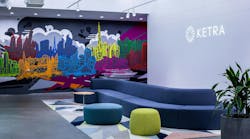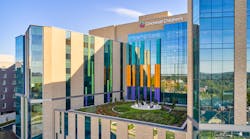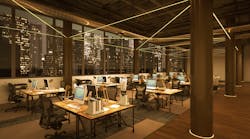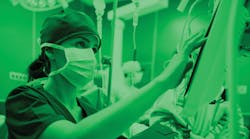Cultivating a healthy relationship with fitness for personal well-being is vital for every individual and even more so for college students. According to research published by Harvard Medical School, approximately 67,000 college students from 100 colleges and universities showed high rates of stress; one out of four students are either diagnosed with, or treated for, mental health issues; 20% of students have considered suicide; and 20% reported self-injury.
Additionally, research from Michigan State University found a link between exercise and higher GPAs in college students. Students with gym memberships were also less likely to drop out of school. Physical activity, including sports participation and gym membership, improves students’ personal well-being, mental well-being, social inclusion, and perceived academic attainment and employability. Regular exercise raises the level of endorphins, the brain’s feel-good chemicals. The release of endorphins increases mental alertness, energy, and enhances mood. Exercise can also improve mental health by reducing anxiety and depression, according to a BetterMynd article.
Never has the need to reduce student anxiety been more important than during the pandemic. COVID-19 amplified and contributed to the mental health impact for many students. Many if not most campuses, fitness centers, and gyms shut down. Once these facilities did reopen and offer students a space for much-needed physical activity, many owners implemented upgraded cleaning protocols, including germicidal lighting technology, to provide students with a sense of comfort and protection.
Case study: University of Massachusetts Amherst
Founded in 1863 as an agricultural college, the University of Massachusetts Amherst (UMass) has approximately 30,000 students and 1,300 faculty members. The institution prioritizes student mental and physical health. Campus recreation is an integral part of the educational mission, and the university actively promotes and encourages a lifelong commitment to health and well-being. To that end, UMass is regularly upgrading campus facilities.
When UMass physical plant engineers updated the lighting at Boyden Gymnasium, prior to the COVID-19 panic, their main goal was to replace the fluorescent lighting, which was dated, uneven, and inadequate in lumen output. The new 74 LED luminaires would reduce energy consumption and improve the lighting quality throughout the facility. But the athletic department had one additional request: The fixtures for the athletic training room, lacrosse locker room, and sports medicine office had to integrate visible light disinfection technology that, in addition to illuminating the space, could kill harmful bacteria. This includes staphylococcus bacteria, such as MRSA (methicillin-resistant Staphylococcus aureus), SARS-CoV-2 (the virus that causes COVID-19), and influenza A.
Exercise facilities have been considered high-risk for transmission because of the enclosed environment, shared equipment, and close contact among users and staff. After the pandemic hit, UMass discovered the added benefit of the disinfecting luminaires: Students feel more protected at the gym.
“The students and staff are very happy with the new lighting,” says Peter Volpe, UMass electrical engineer. “It provides increased illumination levels and a greater level of comfort and security that comes with the fixtures’ abilities to not only fight COVID-19, but also to reduce harmful germs and bacteria that can be found and spread in athletic-type facilities.”
Since their installation, the LED fixtures have been scientifically proven to kill the SARS-CoV-2 virus. UMass has explored using these not only disinfection in locker rooms and training facilities, but also in public spaces, such as lobbies and waiting areas, where they would also be helpful in preventing the spread of COVID-19.
Additionally, the university receives all the expected benefits of transitioning away from fluorescent, including tool-less access into the LED fixtures for ease of re-lamping and maintenance.
“These fixtures use LED technology, so they have a longer lifetime than the fluorescent lighting they replaced, which will reduce maintenance costs,” Volpe says. “The new fixtures do a great job of lighting the room and provide higher illumination levels than the fluorescent light fixtures they replaced—while using less energy.”
Disclosure: The author is chief scientist and head of clinical affairs for Indigo-Clean and Kenall Manufacturing.
This article has been updated since first publication.







